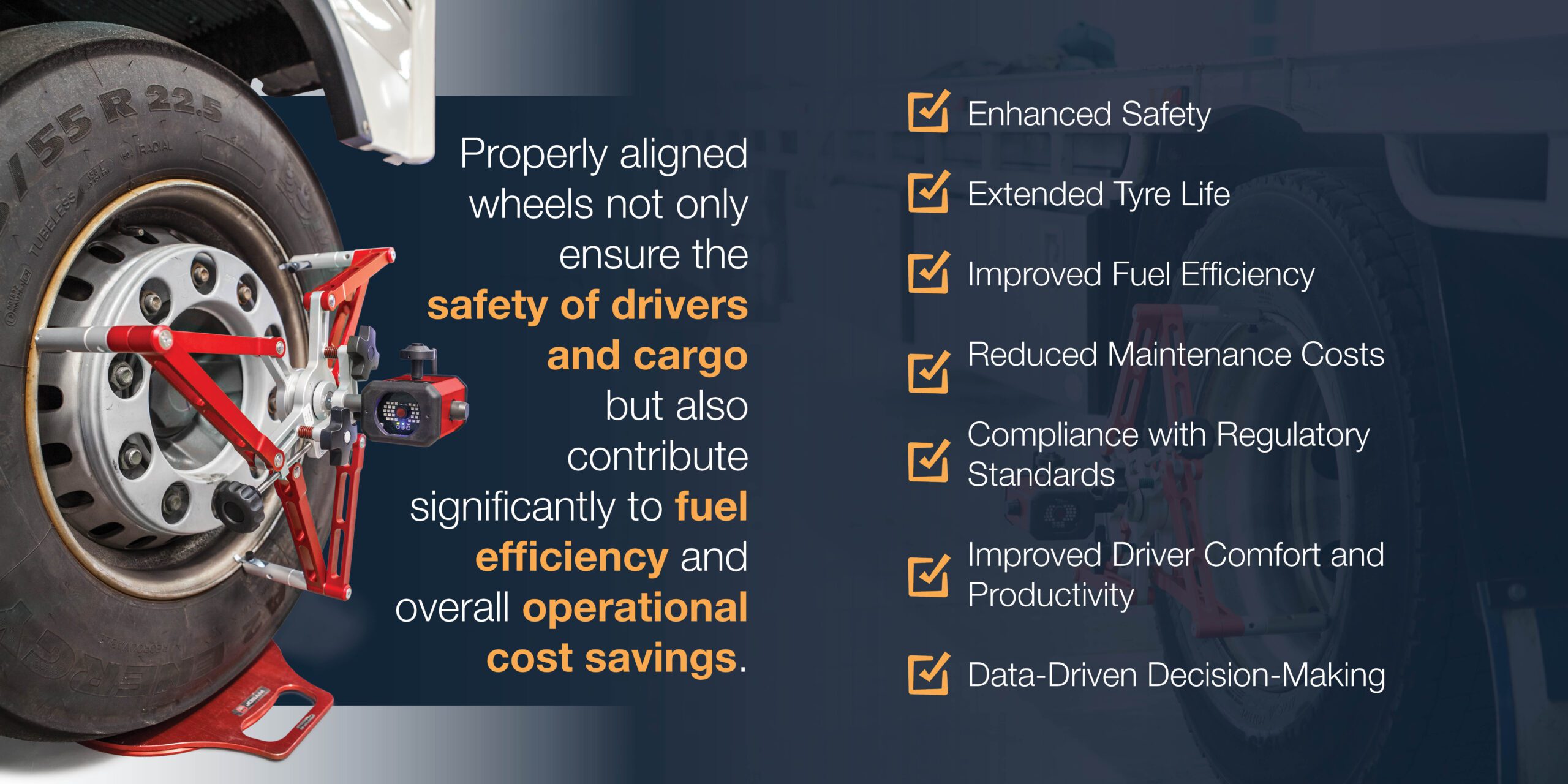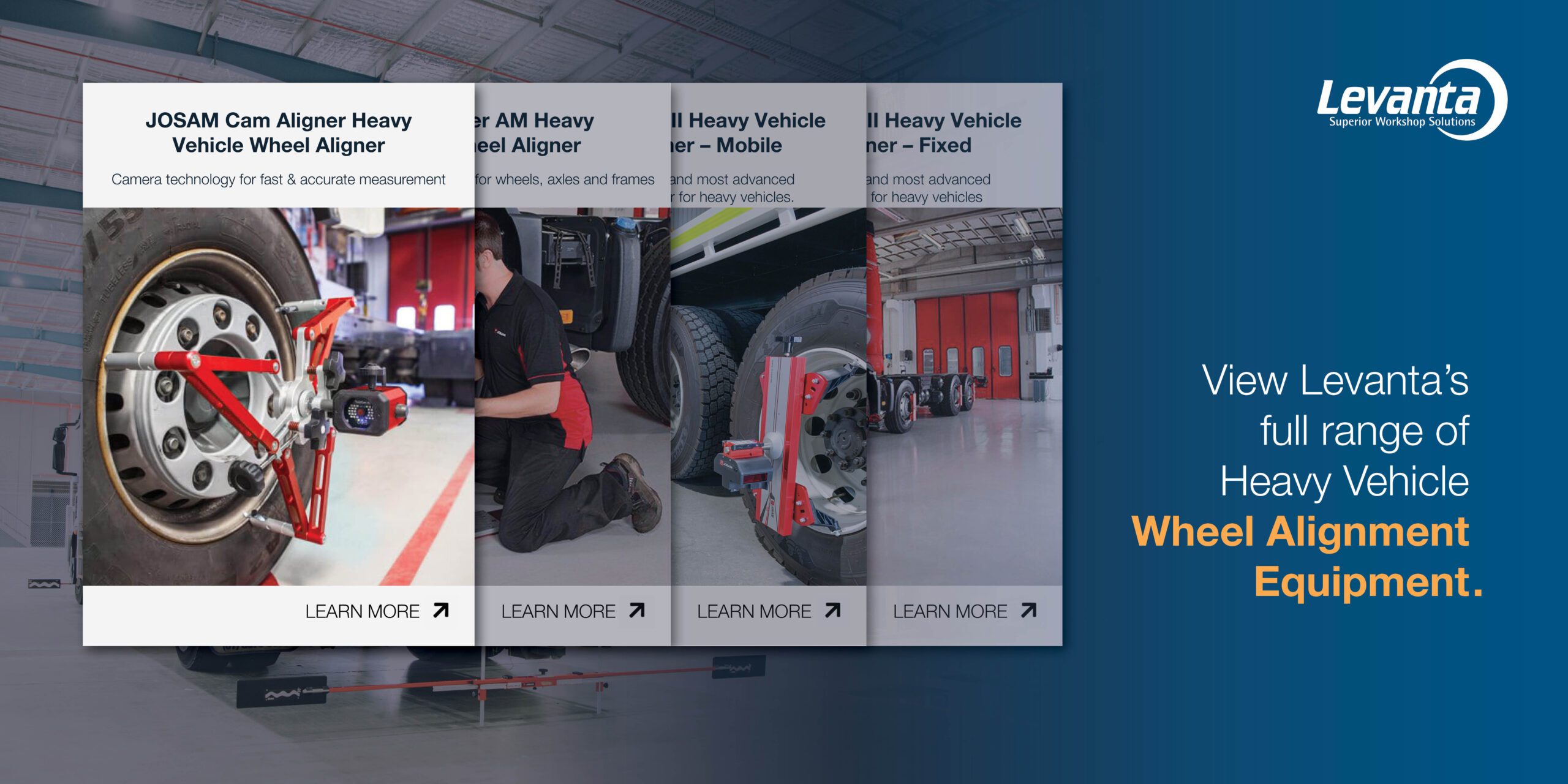In the world of heavy vehicle fleets, maintaining optimal performance is paramount. One often overlooked but crucial aspect of fleet maintenance is wheel alignment. Properly aligned wheels not only ensure the safety of drivers and cargo but also contribute significantly to fuel efficiency and overall operational cost savings. In this article, we’ll explore the reasons of the critical importance of in-house wheel alignment for heavy vehicle truck and bus fleets.

- Enhanced Safety
Safety should always be the top priority for any fleet manager. Proper wheel alignment ensures that a vehicle tracks straight and true, reducing the likelihood of accidents caused by drifting or veering. Misaligned wheels can lead to erratic handling, particularly in emergency situations, making them a serious risk on the road.
- Extended Tyre Life
One of the most immediate and tangible benefits of regular wheel alignment is the extended lifespan of tyres. When wheels are properly aligned, the tread on the tyres wears evenly. This not only saves money on tyre replacements but also minimises the potential for blowouts, which can be catastrophic for heavy vehicles and other road users.
- Improved Fuel Efficiency
In an industry where fuel expenses can account for a significant portion of operational costs, every opportunity to enhance fuel efficiency is crucial. Misaligned wheels create unnecessary resistance, causing the engine to work harder and consume more fuel. By investing in in-house wheel alignment, fleets can see substantial savings in fuel costs over time.
A heavy vehicle with properly aligned wheels can benefit from up to a 5% reduction in fuel consumption, as well as greatly reduced tyre wear.
Let’s look at a couple of real-world examples of the benefits of regular truck/bus wheel alignments:
Example 1: Reduced Fuel Costs
Distance travelled per annum: 200,000 km
Diesel fuel price: $2.20/litre
Fuel consumption: 4 litres/10km
Fuel cost reduction thanks to wheel alignment: conservatively, we’ll say 3% for this example
Total cost reduction: 0.03 x 200,000 x 2.2 x 0.4 = $5,280 saved per year/per truck.
- Reduced Maintenance Costs
Aligned wheels also lead to reduced wear and tear on other components of the vehicle’s suspension system. When wheels are out of alignment, they can place undue stress on parts such as tie rods, bushings, and shock absorbers. This leads to premature wear and ultimately higher maintenance costs. Proper alignment, on the other hand, helps to preserve these components, resulting in fewer repairs and replacements.
- Compliance with Regulatory Standards
Various regulatory bodies enforce strict guidelines on vehicle safety and maintenance. Ensuring that your fleet’s wheels are properly aligned not only keeps your vehicles in compliance with these standards but also demonstrates a commitment to safety and responsibility.
- Improved Driver Comfort and Productivity
A well-aligned vehicle is easier to handle and offers a smoother ride. This not only enhances driver comfort but also reduces driver fatigue, allowing them to stay alert and focused on the road. A comfortable driving experience can also contribute to increased driver satisfaction and retention, which is crucial in an industry facing a shortage of skilled drivers.
- Data-Driven Decision-Making
Having an in-house wheel alignment system provides valuable data and insights. Fleet managers can track the alignment history of each vehicle, identify patterns, and address issues proactively. This data-driven approach allows for more informed decision-making, enabling truck and bus fleets to allocate resources efficiently and prioritise maintenance efforts.
Talk to Levanta about Heavy Vehicle Wheel Alignment Machines
In conclusion, in-house wheel alignment is not just an expense, but an investment that pays dividends in terms of safety, efficiency, and cost savings. It’s a foundational component of a well-maintained fleet and should be a priority for any responsible fleet manager.
By prioritising wheel alignment, fleet operators can ensure that their vehicles remain safe, efficient, and reliable, ultimately contributing to the success of their operations.
To upgrade your heavy vehicle workshop and ensure more efficient running for your fleet, you must consider a wheel alignment system.
Call Levanta now on 1300 577 541 or get in contact us to find out more about wheel alignment technology for your heavy vehicle workshop.



